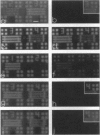Abstract
We have demonstrated the assembly of two-dimensional patterns of functional antibodies on a surface. In particular, we have selectively adsorbed micrometer-scale regions of biotinylated immunoglobulin that exhibit specific antigen binding after adsorption. The advantage of this technique is its potential adaptability to adsorbing arbitrary proteins in tightly packed monolayers while retaining functionality. The procedure begins with the formation of a self-assembled monolayer of n-octadecyltrimethoxysilane (OTMS) on a silicon dioxide surface. This monolayer can then be selectively removed by UV photolithography. Under appropriate solution conditions, the OTMS regions will adsorb a monolayer of bovine serum albumin (BSA), while the silicon dioxide regions where the OTMS has been removed by UV light will adsorb less than 2% of a monolayer, thus creating high contrast patterned adsorption of BSA. The attachment of the molecule biotin to the BSA allows the pattern to be replicated in a layer of streptavidin, which bonds to the biotinylated BSA and in turn will bond an additional layer of an arbitrary biotinylated protein. In our test case, functionality of the biotinylated goat antibodies raised against mouse immunoglobulin was demonstrated by the specific binding of fluorescently labeled mouse IgG.
Full text
PDF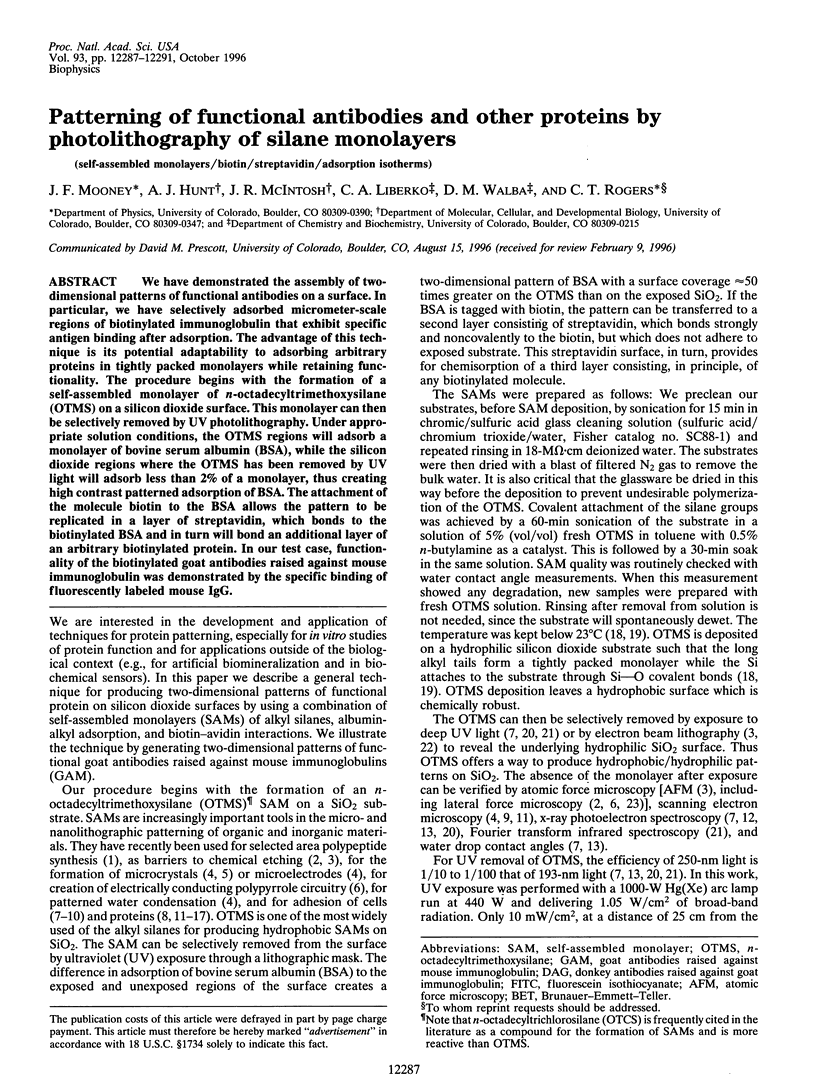
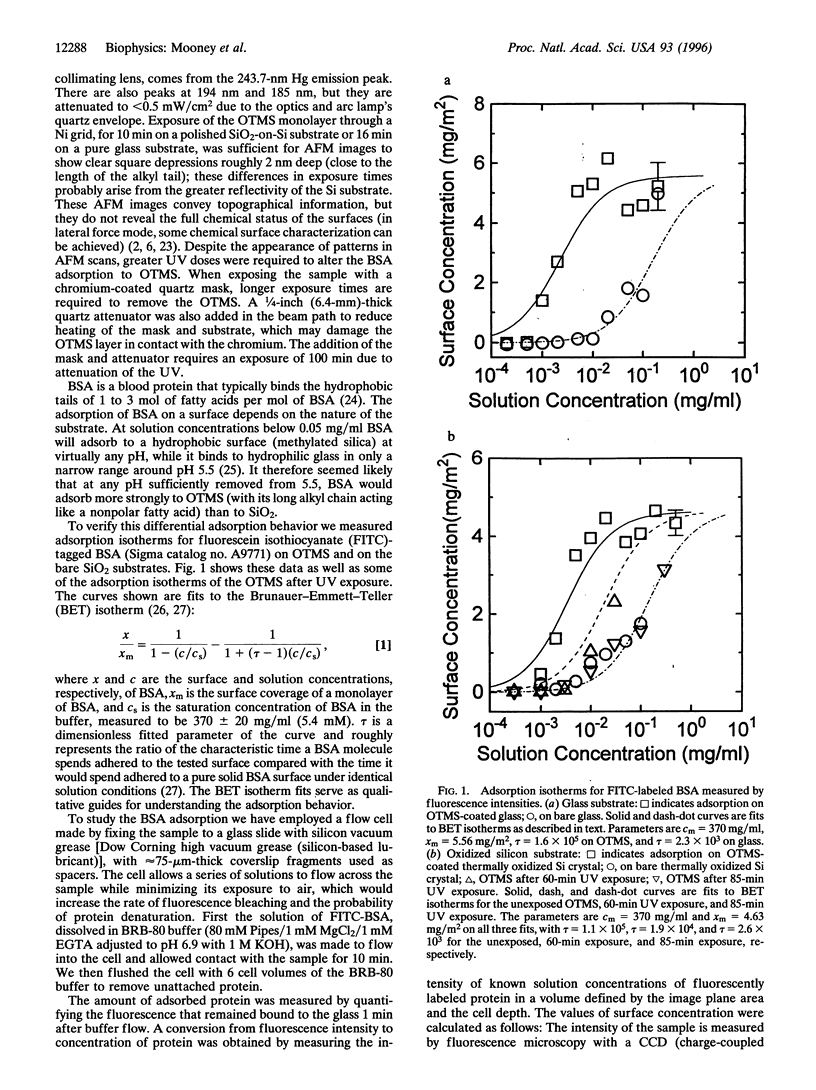
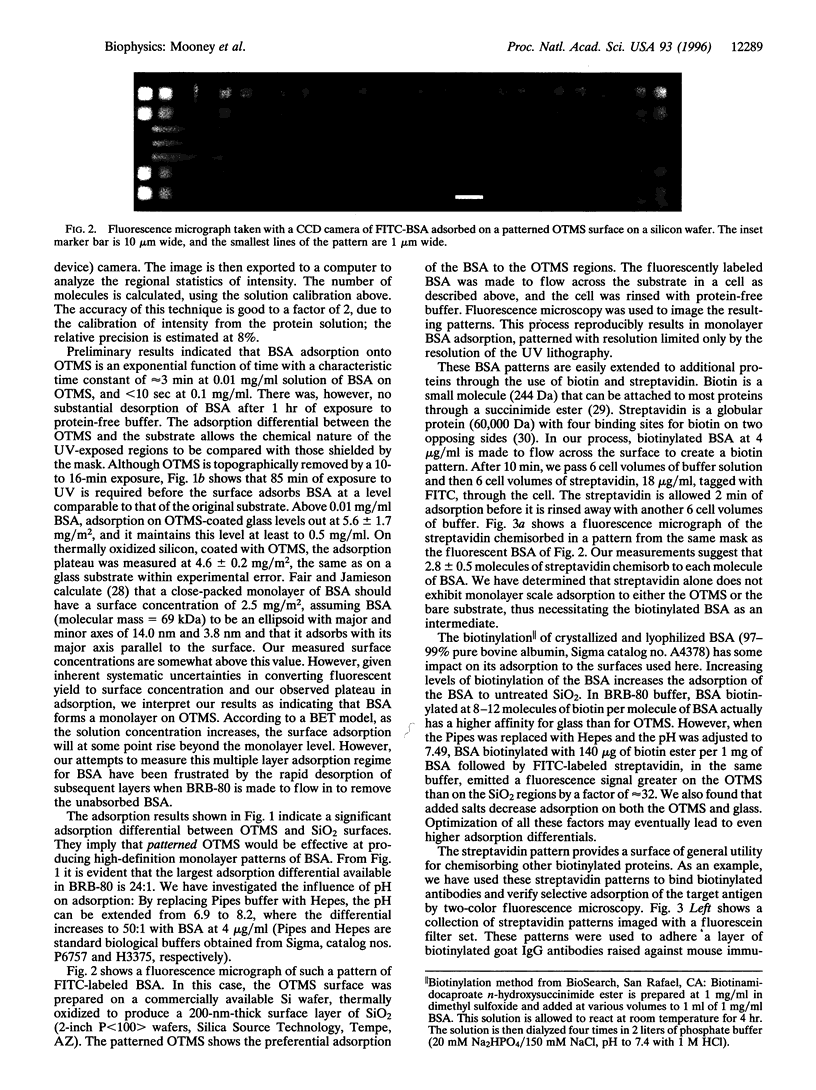
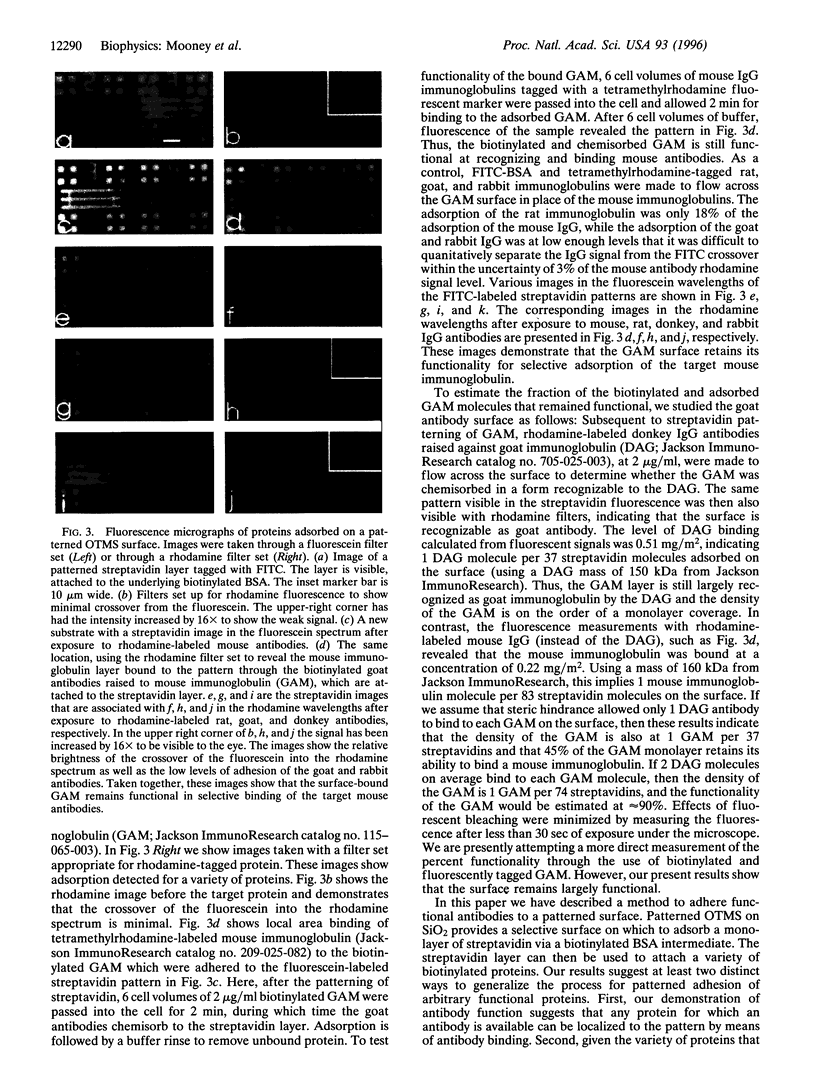
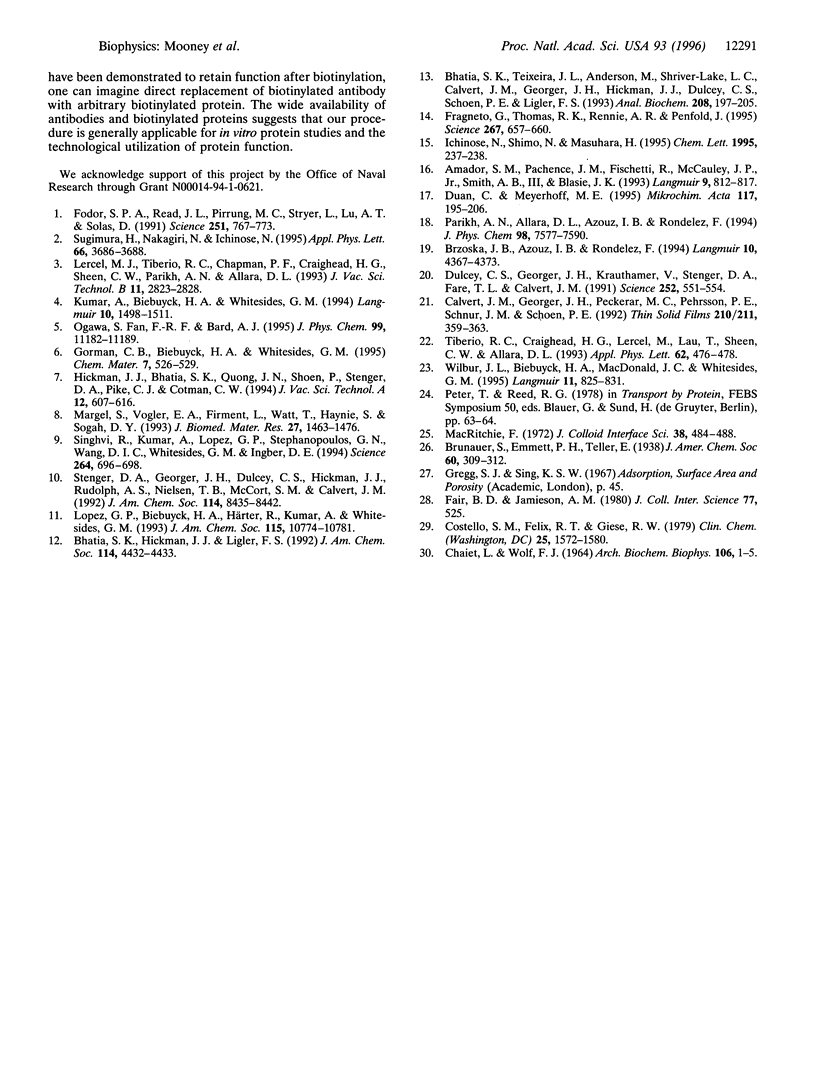
Images in this article
Selected References
These references are in PubMed. This may not be the complete list of references from this article.
- Bhatia S. K., Teixeira J. L., Anderson M., Shriver-Lake L. C., Calvert J. M., Georger J. H., Hickman J. J., Dulcey C. S., Schoen P. E., Ligler F. S. Fabrication of surfaces resistant to protein adsorption and application to two-dimensional protein patterning. Anal Biochem. 1993 Jan;208(1):197–205. doi: 10.1006/abio.1993.1027. [DOI] [PubMed] [Google Scholar]
- CHAIET L., WOLF F. J. THE PROPERTIES OF STREPTAVIDIN, A BIOTIN-BINDING PROTEIN PRODUCED BY STREPTOMYCETES. Arch Biochem Biophys. 1964 Jul 20;106:1–5. doi: 10.1016/0003-9861(64)90150-x. [DOI] [PubMed] [Google Scholar]
- Costello S. M., Felix R. T., Giese R. W. Enhancement of immune cellular agglutination by use of an avidin-biotin system. Clin Chem. 1979 Sep;25(9):1572–1580. [PubMed] [Google Scholar]
- Dulcey C. S., Georger J. H., Jr, Krauthamer V., Stenger D. A., Fare T. L., Calvert J. M. Deep UV photochemistry of chemisorbed monolayers: patterned coplanar molecular assemblies. Science. 1991 Apr 26;252(5005):551–554. doi: 10.1126/science.2020853. [DOI] [PubMed] [Google Scholar]
- Fodor S. P., Read J. L., Pirrung M. C., Stryer L., Lu A. T., Solas D. Light-directed, spatially addressable parallel chemical synthesis. Science. 1991 Feb 15;251(4995):767–773. doi: 10.1126/science.1990438. [DOI] [PubMed] [Google Scholar]
- Fragneto G., Thomas R. K., Rennie A. R., Penfold J. Neutron reflection study of bovine beta-casein adsorbed on OTS self-assembled monolayers. Science. 1995 Feb 3;267(5198):657–660. doi: 10.1126/science.7839141. [DOI] [PubMed] [Google Scholar]
- Margel S., Vogler E. A., Firment L., Watt T., Haynie S., Sogah D. Y. Peptide, protein, and cellular interactions with self-assembled monolayer model surfaces. J Biomed Mater Res. 1993 Dec;27(12):1463–1476. doi: 10.1002/jbm.820271202. [DOI] [PubMed] [Google Scholar]
- Singhvi R., Kumar A., Lopez G. P., Stephanopoulos G. N., Wang D. I., Whitesides G. M., Ingber D. E. Engineering cell shape and function. Science. 1994 Apr 29;264(5159):696–698. doi: 10.1126/science.8171320. [DOI] [PubMed] [Google Scholar]




